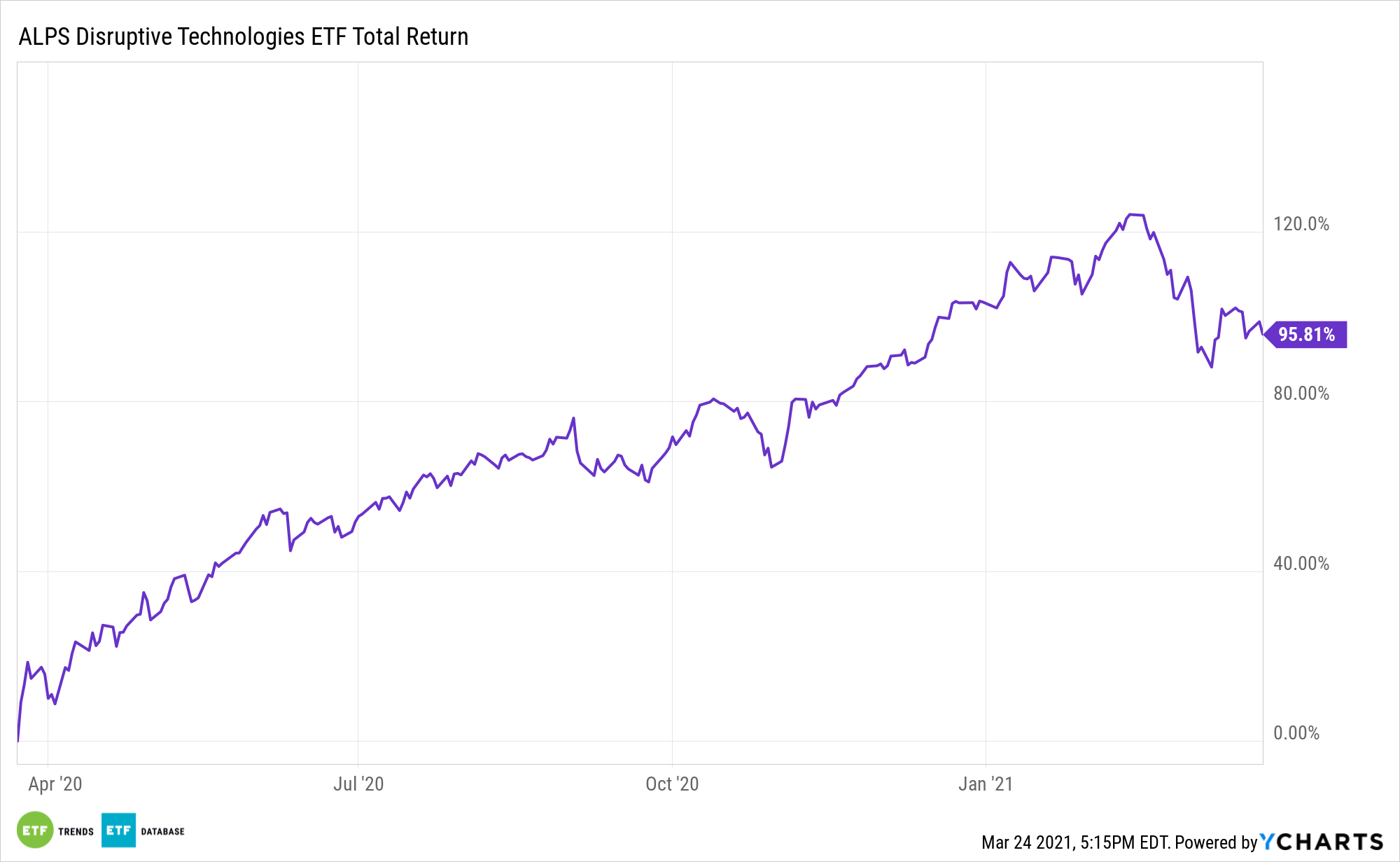The ALPS Disruptive Technologies ETF (CBOE: DTEC) offers broad exposure to multiple emerging growth technologies.
DTEC tracks the Indxx Disruptive Technologies Index, which identifies companies using disruptive technologies across ten thematic areas, including Healthcare Innovation, Internet of Things, Clean Energy and Smart Grid, Cloud Computing, Data and Analytics, FinTech, Robotics, Artificial Intelligence, Cybersecurity, 3D Printing, and Mobile Payments.
One of the primary benefits of DTEC is that many disruptive themes intersect with each other, a trait old guard technology funds don’t adequately leverage. Consider the examples of AI and healthcare.
“Digital tools can help. In just one example, clinicians around the world are using artificial intelligence auto-contouring tech to automate and optimize the time-consuming task of pinpointing organs at risk. Researchers at one cancer center in New Mexico said that this AI saves them more than seven hours a week, and that number is rising,” writes Jean Neheme in an article for Barron’s.

Futuristic Healthcare Exposure
DTEC’s healthcare innovation sleeve offers investors another growth outlet – one ripe with long-term potential.
Healthcare technology has come to the fore, offering various innovations to combat the coronavirus. This can only help fuel healthcare technology ETFs, which are moving forward from preventative medicine to treatment.
“AI has other overwhelmingly positive implications for healthcare, from making logistics more efficient, to accelerating drug development and ultimately improving diagnosis and treatment. Improved data collection and analytics alone would have a tremendous impact on healthcare administration, while a wealth of data shows that in certain key areas, AI can process and support the recognition of abnormalities such as rare hereditary diseases,” according to Neheme.
The future of healthcare looks more technologically driven as the industry shifts into the digital age from old analog equipment, developing early detection and prevention, with robotics or artificial assisted technicians.
AI in health care could balloon to a $6.6 billion industry by 2021 from only $600 million back in 2014. AI funding has almost doubled to $2.3 billion in 2018, compared to $1.2 billion in 2017.
Other technology funds to consider include the Technology Select Sector SPDR ETF (NYSEArca: XLK) and the Fidelity MSCI Information Technology Index ETF (FTEC).
For more on cornerstone strategies, visit our ETF Building Blocks Channel.
The opinions and forecasts expressed herein are solely those of Tom Lydon, and may not actually come to pass. Information on this site should not be used or construed as an offer to sell, a solicitation of an offer to buy, or a recommendation for any product.








